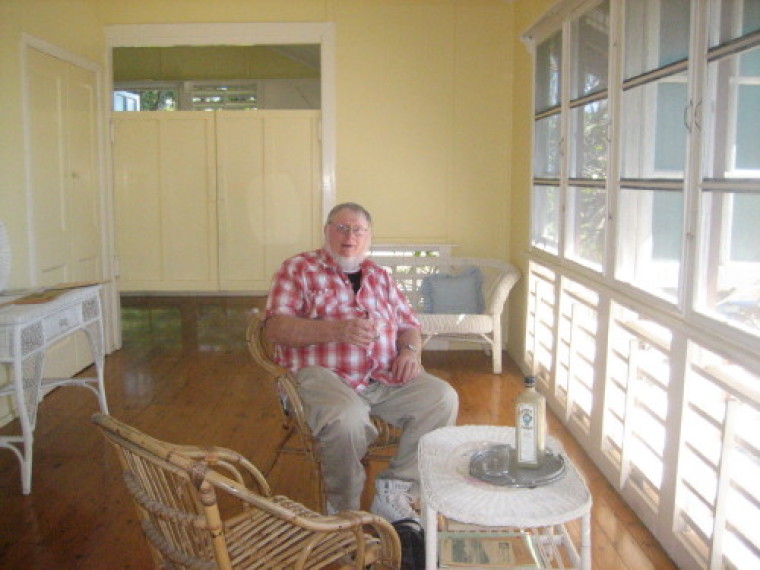
The film 'Australia' was set in the Northern Territory from the late 1930's and through to the bombing of Darwin on 19 February 1942. This was a Baz Luhrmann film centering on a number of issues, including that of the discrimination against both the Aboriginal community and those of half cast birth. www.australiamovie.net
Several things can be said at this point. The presentation in the film 'Australia' was indeed graphic with the capture of the panic that any such announced bombing would bring any community. Therefore it was of much interest to shown when in Bowen, where this filming took place, the position of the hotels, where the vehicles were blown up simulating the air attack and how the film makers created the imagery of what took place on the 19 February 1942 in Darwin.
The film 'Australia' showed Darwin as it was in 1942 and it was interesting to notice the type of housing in that city at that time as presented in the film. When visiting Darwin itself, Mark Tronson went to see Burnett House which is a pre World War II house of high fashion in Darwin, overlooking the Bay and now the Casino.
During the bombing of Darwin during WWII, the extent of which has been 'hushed' in Australian history, Burnett House was damaged but not destroyed. The windows were smashed as were the protective weather slats. However, now it has been restored to its former glory and it is open to the public every day.
The monthly highlight of Burnett House is that it offers a High Tea. For a princely sum of $25 for two, anyone can have afternoon tea in the English style of the period, complete with beautiful porcelain crockery and individual teapots.
There is a lounge ('drawing room') on the bottom floor which is a large area where guests would have been made welcome and offered drinks and hors d'oeuvres and where the butler and maids in waiting would have taken coats and scarves.
The kitchen was off to one side through a small hallway, and is now set out in the style of the day, small compared to most modern kitchen areas but considerably larger than would have been in most households of 'ordinary' people.
Upstairs is one very large central bedroom which is surrounded on three sides by covered in verandahs, one of which serves as a sitting room where drinks were served and the occupants could look out over the harbour while relaxing.
The bed was covered with a mosquito net tied up for day time convenience. On one side of the bed was the latest 1930's radio set in beautifully polished timbers, while on the other side were free standing wardrobes, set up for display with men's ties hanging in one section and fashionable ladies' evening gowns in the other.
Burnett House is only one of four like it remaining in Darwin and stands as a beacon of a past era. The film 'Australia' certainly rang true with its depiction of the Darwin in 1942 albeit from the location of Bowen.
Dr Mark Tronson is a Baptist minister (retired) who served as the Australian cricket team chaplain for 17 years (2000 ret) and established Life After Cricket in 2001. He was recognised by the Olympic Ministry Medal in 2009 presented by Carl Lewis Olympian of the Century. He has written 24 books, and enjoys writing. He is married to Delma, with four adult children and grand-children.
Mark Tronson's archive of articles can be viewed at www.pressserviceinternational.org/mark-tronson.html